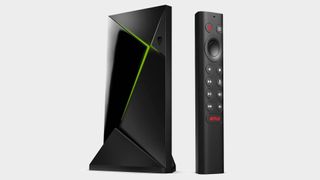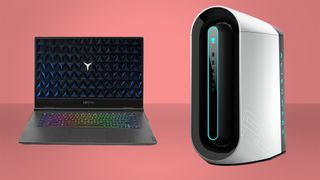Nvidia is bringing 4K 60fps AI upscaling to GeForce Now on Shield TV
Nvidia updates the Shield TV to better suit entertainment savants.

Nvidia's Shield TV devices received an update today that enables greater UHD 4K upscaling across the board, as well as the ability to stream 60 fps content on the Shield TV Pro. Nvidia has also detailed a further update, coming in the next few weeks, which will allow the GeForce Now streaming service to upscale your favourite games to 4K 60 fps.
Over in a blog post on the Nvidia website, the company outlines the specific improvements introduced with this latest update—the 25th for original Shield owners, it'll have you know.
Most notable are the improvements to the Shield's own AI upscaling, which allows for low-res media playing on your Shield TV to be auto-scaled up to glorious 4K on the big screen. It's now possible to use the 4K upscaling functionality from 360p through 1440p—it was previously limited to just 720p and 1080p.
You can check out a comparison between basic upscaling and AI upscaling over in Nvidia's blog post.

Best gaming PC: the top pre-built machines from the pros
Best gaming laptop: perfect notebooks for mobile gaming
Otherwise the update also has some good news for gamers. Nvidia's game streaming service, GeForce Now, will soon also support 4K 60fps upscaling over Shield devices, which will allow for a big screen experience through the Nvidia Games app library.
Nvidia's also chucked in a couple of improvements for IR and CEC volume control support (volume control via HDMI devices using a single remote) to ensure that the Shield remote is even more a part of the home cinema experience.
Finally, older Shield models will now have an option to match the frame rate of displayed content and there's now native SMBv3 support, which enables remote access to files from your PC without using PLEX.
The biggest gaming news, reviews and hardware deals
Keep up to date with the most important stories and the best deals, as picked by the PC Gamer team.

Jacob earned his first byline writing for his own tech blog. From there, he graduated to professionally breaking things as hardware writer at PCGamesN, and would go on to run the team as hardware editor. He joined PC Gamer's top staff as senior hardware editor before becoming managing editor of the hardware team, and you'll now find him reporting on the latest developments in the technology and gaming industries and testing the newest PC components.
Most Popular







